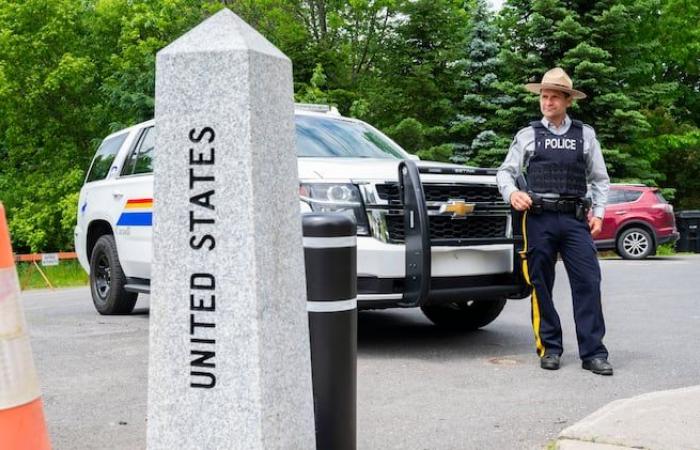“We have been on alert for several days, and we will be on alert for several more weeks. We are aware that, if there are people who want to leave the United States, they are likely to do so very soon,” explains Sergeant Charles Poirier, spokesperson for the RCMP.
People without status who live in the United States risk wanting to leave the country after the election of Donald Trump, whose migration policies are extremely severe.
The RCMP has deployed police officers on the ground and developed contingency plans to call in others for reinforcement, from one end of Canada to the other, if it becomes necessary.
“These are interventions 24 hours a day, seven days a week. It is very demanding on our human resources. But this time, we are ready, with police officers who are ready to come and help us quickly.”
— Sergeant Charles Poirier, RCMP spokesperson
The logistics are also well planned to find buses, tents, buildings and temporary grounds where the police and intercepted illegal migrants could settle, if there is an influx of people.
In 2016, the first migration crisis took the RCMP by surprise, who sometimes found themselves intercepting up to 500 people per day, after illegally crossing from the United States to Canada. The first times had been difficult.
On the ground, citizens have noticed the increased presence of the federal police over the past two weeks.
In Estrie, a citizen of the border town of Saint-Armand, who does not wish to identify himself for fear of smugglers, says that a vehicle transporting illegal migrants was abandoned near his home at the end of October.
“I feel like people are mostly passing by at night, and they’re more aware of where the cameras are now, so they’re harder to spot. But we know that there are passages,” he says.
In border municipalities, we remain hopeful that the border will be better protected from now on.
While we had been calling for a meeting with him for months, Public Safety Minister Dominic LeBlanc finally went to Saint-Armand on July 22 to meet Mayor Caroline Rosetti and citizens who often see people crossing on their land.
“For now, we are mainly happy to have already established links with the federal government. The table is set, we are in surveillance mode,” she adds.
From the United States to Canada… or the opposite?
The 2016 migration crisis led to the creation of the “illegal Roxham Road crossing”, where Canadian authorities had set up to receive asylum seekers. Illegal, but tolerated, Roxham Road was closed in February 2023.
This caused a reversal in the migration trend: migrants began entering Canada by plane, before crossing the land border on foot to the United States.
For the moment, the Safe Third Country Agreement between Canada and the United States is still in effect. Created in 2004, it stipulates that asylum seekers must do so in the first country they arrive.
Last summer, without the authorities really understanding why, migrants began crossing illegally by the hundreds… from Canada to the United States.
The illegal but tolerated crossing of Roxham Road was closed in February 2022. (La Presse Archives)
Until August 2024, people who had arrived in Canada, but chose to cross the border illegally, had 24 hours to consult a lawyer when caught by American authorities. Migrants also had the right to request time to gather evidence.
In August, a tightening of American rules changed the situation: people only have four hours to consult a lawyer and are no longer entitled to a delay. Today, border services officers only examine documents that asylum seekers have with them. For three months, crossings between the two countries have slowed down.






